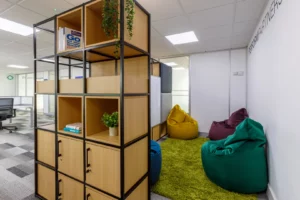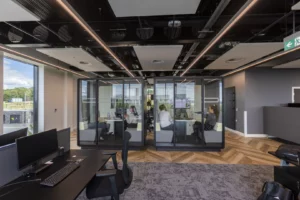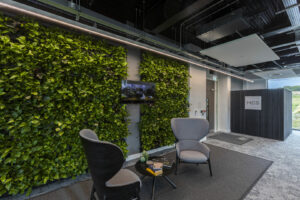The modern workplace isn’t just a place for employees to work through their to-do lists; it must be a diverse workspace inclusive to everyone’s needs. Recent research found that 81% of UK businesses are looking to increase their focus on the mental health of their employees. As such, the role the workplace plays are hugely important in making workers feel engaged and appreciated.
Workforces are becoming more diverse. Businesses are benefiting from bringing a range of skills, opinions, and experiences into the company, helping underline the value of a workplace that matches that diversity and variety in tandem. A diverse workspace must reflect the wide-ranging needs and approaches to tasks of every faction of its workforce. Sewing a positive culture of wellbeing and individualised nurturement isn’t just about boosting staff morale. If a workforce collectively and individually feels catered to, there will be a natural upsurge in engagement and productivity. Workers will feel better equipped to immerse themselves in achieving results for a company that cares about them.
Stimulating inclusivity
With diverse workspace design, there is no one-size-fits-all solution. As different personalities perform better under different conditions, with generational and cultural differences hugely influential factors, workspaces must be sensitive to the vibrancy that craves. The solution comes through conversations, where employees can talk openly about what they need from their employers to deliver the best results. Every voice must be heard throughout the planning and design process.
With approximately 20% of the UK population neurodiverse, this is one example of needs that can be facilitated through workplace design to ensure happy workers. Environments must be crafted to support their concentration and performance and overall wellbeing. Overly intense lighting, busy patterns on walls and furniture, poor signage and noisy and densely populated areas can create sensory overloads. As such, questions must always be posed as to how those designs would be perceived by a neurodiverse worker and how those problems can be best resolved for the betterment of all.
Different spaces
If a diverse workspace is to truly cater for a diverse workforce, it must be rich with different spaces employees can perform in. Access to quiet working spaces offers a more comfortable, distraction-free space to work in. These spaces, which are also well-suited for meetings and more intimate working sessions are just as important as open-plan spaces. They give employees the chance to work in a space best suited for a specific task. Soundproofed booths, for instance, can seamlessly integrate into open-plan spaces without compromising the performance of either.
Accurate acoustics
Gen-Z and millennial workers now make up approximately 50% of the workforce. Of these two generations, 75% prefer collaboration and personal interactions in their day-to-day working lives. To accommodate their needs, many businesses are turning to open-plan schemes to bring the best out of their teams.
However, getting open-plan schemes right takes more than just the removal of dividing walls. Taking the time to acoustically treat the space, with strategically placed absorptive PET boards and biophilia your secret weapons here. They help soak up excess noise, allowing for a collaborative, but concentration-friendly workspace.
Away from desks
A workspace is more than just its namesake. Done right, it can be the perfect place where employees can speak about their mental health. Mental health charity Mind has discovered that one in four UK workers see the office as the ideal space to talk to others about their mental health, ahead of gyms, cafes, and pubs.
Cosy kitchen areas and welcoming break-out spaces are ideal for this and can elevate a space’s impact on workforce wellbeing. These spaces are more than just about providing a comfortable setting for a lunch or short break, they offer a safe space for employees to connect and engage with one another supporting their mental health.
Promoting physical health
The average office worker spends over 2,000 hours per year at work. Supporting their physical health is therefore just as important as considerations for their mental health. From incorporating workout facilities in workspaces to starting social exercise initiatives, employers should be proactive in encouraging their staff to adopt a healthy lifestyle.
Whilst office gyms aren’t always a viable option, one easy solution that we’re seeing a rise in popularity is shower facilities. This way, employees can run or cycle into work and freshen up before the working day begins. Not only does help staff stay healthy it also helps shrink the size of a business’s carbon footprint.
Outdoor spaces, where possible, are a great asset too. Simply spending 20 minutes outside a day can alleviate stress, so providing an outdoor space can be of great benefit to employees. Additional research also found that ‘walk and talk coaching’ can help tackle burnout, which is a possible solution when a workplace doesn’t have its outside areas.
A sense of belonging
When employees feel seen and listened to, it encourages a sense of belonging in the workplace. The best working environments are places where employees feel reflected in their environment. It breeds an empathetic and caring company culture as it interweaves both physical and mental health and wellbeing characteristics into the very fabric of space. Ultimately, this can help create a happier, healthier team that is ready for action.





